Manazel Al Safa Tower- Business Bay Area- Sheikh Zayed Road
Business Centre - First Floor
Whatsapp: +971050-9433094
Email: [email protected]
By Appointment Only
When purchasing certified diamonds, it is essential to understand the diamond grading criteria used by the professionals and laboratories performing the certification.
Diamond grading covers numerous aspects of each diamond’s
Qualities, but four grades are critical to understanding:
Cut, Clarity, Color & Carat Weight.
Additional ratings and measurements are noted on a diamond certificate. They generally fall under one of the four categories (the “Four Cs”). They include measurements such as “depth” and “table” as part of the description of the diamond’s cut.
Learn about how diamonds are graded by reading the articles below.
Find Your Diamond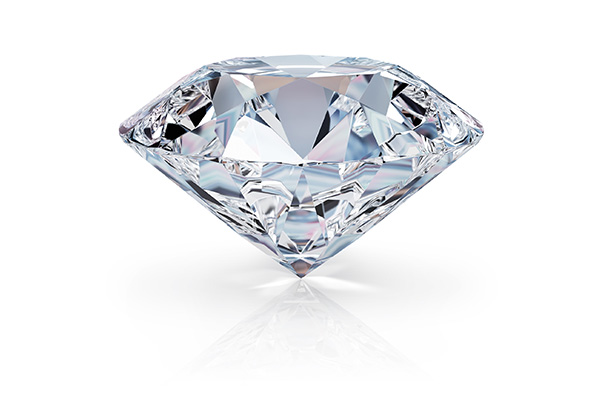
Cut is probably the most important quality factor and challenging of the four Cs. The brilliance of a diamond depends on the quality of its cut.
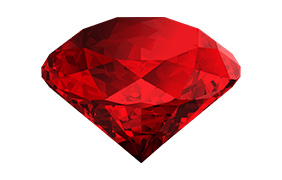
Colorless diamonds are often the most desirable to many of our clients. They allow the most refraction of light (sparkle). Off-white diamonds absorb light, inhibiting brilliance.
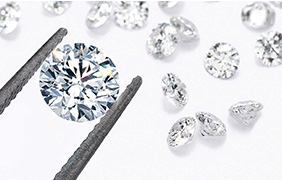
Most diamonds contain inner flaws, or inclusions, that occur during formation. The visibility, the size, and the number of these inclusions determine a diamond’s clarity. Clear diamonds create more brilliance and thus are more highly prized and priced.
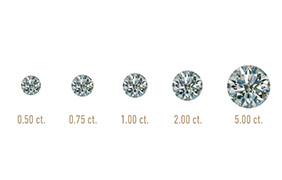
A carat is a unit of weight by which a diamond is measured. Large diamonds are less common than small diamonds. Hence the price of a diamond rises exponentially to its size. Please read this guide to understand better what a carat is and how it relates to the appearance of a diamond.
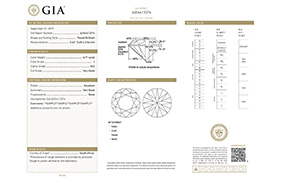
The diamond certificate, sometimes called a grading report, is a complete evaluation of your diamond. Those certificates from respected laboratories are performed by a qualified professional with special gemological instruments to ensure quality and authenticity. Each diamond stone bears its own recognizable and individual characteristics on the certificate.
This is how well the facets of the diamond stones are cut in terms of their alignment proportions with one another. Well-cut diamonds have great symmetry grades, which means this attribute goes hand in hand with the cut grade. It also has a grade that can be seen on the GIA or IGI certificate.
Fluorescence is a trait based on the diamond’s appearance in UV light. The trace of minerals in the diamond, as it forms naturally or in the lab, can cause the diamond to emit a blue glow. While it does not affect the appearance of the diamond in daylight, it can affect the price of the diamond.
The polish is how well the diamond is polished and how even and smooth the surfaces are. If there is any unevenness, roughness, or remnants of a diamond can affect the quality of the diamond. In general, diamonds with an excellent cut will have an excellent polish grade.
The measurement of the diamond determines how well the diamond sparkles and how well this can show off the clarity and color of the diamond. A well-proportioned diamond looks much better than a larger diamond with less ideal measurement. The proportions of the diamond can make the gemstone look larger and maximize its beauty.
This is the bottom part of the diamond that needs to be in the correct proportion of the diamond. It determines the passage of light through the diamond and the sparkle of the diamond. If the culet is not in the correct proportion, there will be a light leakage which can detract from the sparkle of the diamond.
isadorajewellery wants to celebrate your birthday by sending you a gift!
